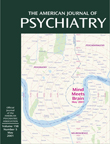Maurice Dide, 1873–1944
Maurice Dide, one of the most attractive figures of 20th-century French psychiatry, incarnated the committed physician, both scientist and man of action.
Born in Paris, he studied psychiatry at the Salpêtrière. He was medical director of the Braqueville mental hospital in Toulouse from 1909 to 1936. In 1922, he was appointed professor in the Faculty of Humanities in Toulouse and taught psychopathology there until his arrest by the occupying German army during World War II.
Among his abundant neuropsychiatric works, three main contributions should be emphasized. In 1902, he described a neurological syndrome caused by a bilateral obstruction of the posterior cerebral arteries, which is internationally known as Dide-Botcazo syndrome. His description of doctrinaire torturers (doctrinaires tortionnaires) in his book Les idéalistes passionnés(1), published in 1913, appears prophetic of Nazi genocide. Skilled in neurological anatomy and histology, he linked the negative symptoms of schizophrenia to anatomic and histologic lesions in the basal ganglia and the thalamus (2). A description of this work was published in 1921, preceding by many years the recent findings from magnetic resonance imagery and histopathology.
During World War II, Maurice Dide, who had fought against racist and eugenist theses, committed himself to the fight against the German army of occupation and became the regional leader of the Resistance network, Combat. He was arrested after being denounced by a Gestapo agent who had infiltrated the network and was sent to the concentration camp of Buchenwald. He died there some weeks later as the result of dog bites he sustained after helping an ill prisoner (3).
Address reprint requests to Dr. Chabrol, Département de Psychologie, Université de Toulouse-Le Mirail, 31058 Toulouse, France. Photograph courtesy of Erès.

Maurice Dide
1. Dide M: Les idéalistes passionnés. Paris, Alcan, 1913Google Scholar
2. Dide M, Guiraud P, Lafage L: Syndrome parkinsonien dans la démence précoce. Rev Neurol 1921; 4:691–694Google Scholar
3. Mangin-Lazarus C: Maurice Dide: un psychiatre et la guerre. Toulouse, Erès, 1994Google Scholar



